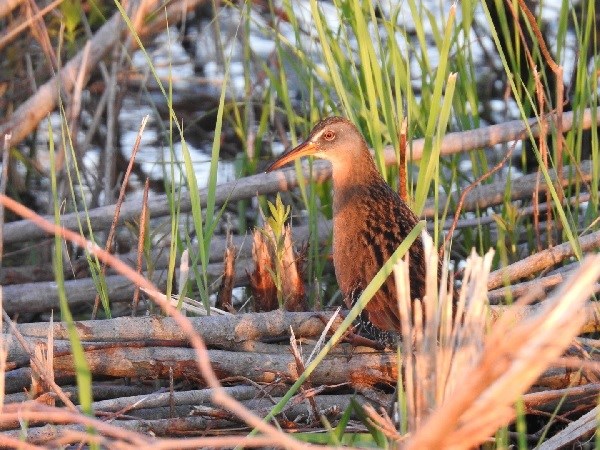
Photo by Libby Keyes
In order to determine what each marsh bird species needs, scientists are collecting data on where marsh birds are found and the habitat they are using. Trained monitors perform early morning bird surveys at over 30 wetland sites across the state. Habitat assessments include aerial drone surveys led by Indiana Audubon in most sites, excluding Indiana Dunes National Park, and plant surveys which are led by Indiana University Northwest. All of this information is collected on an annual basis and is reported to land managers so they can learn how best to manage the habitat for these rare marsh bird species.
In 2019, three rounds of marsh bird surveys at 25 survey points were conducted in Indiana Dunes National Park. The surveys were conducted in three wetland areas within the park: Cowles Bog, Great Marsh and Miller Woods.
Ultimately, the results of these surveys will help guide restoration actions on the ground while also using marsh birds as an indicator for measuring the long-term benefits of those actions. And it’s not only marsh birds that need restored wetlands! Enhancing our wetlands for birds also helps build climate resiliency through floodwater retention and carbon capture, thus benefiting both wildlife and our communities.
Last updated: September 29, 2021
